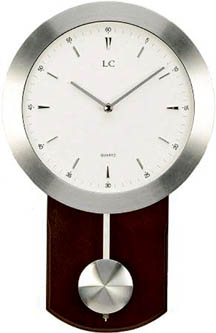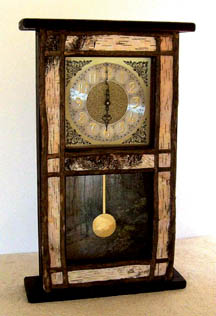
Tick, tock, tick, tock...: Swing of the pendulum clock
Pendulum clocks are like grandfather clocks, and produce a 'tick,
tock' sound all the time. Have you ever thought about how they actually
work? Today, we give you the A to Z about these clocks.
Pendulum clocks have been used since 1656, and is believed to be the
first accurate clock. Most of its parts play an important role in the
clock's mechanism. They are the face of the clock, with its hour and
minute hand; one or more weights; and, of course, the pendulum. In most
wall clocks that use a pendulum, the pendulum swings once per second. In
small cuckoo clocks, the pendulum might swing twice per second.

In large grandfather clocks, the pendulum swings once every two
seconds. So, how do these parts work together to keep the clock ticking
and the time accurate? First, take a look at why a weight is used in a
clock.
The idea behind this is that the weight acts as an energy storage
device, so that the clock can run for relatively long periods of time
even unattended. When you 'wind' a weight-driven clock, you pull on a
cord that lifts the weight. That gives the weight 'potential energy' in
the Earth's gravitational field. The clock uses this potential energy as
the weight falls to drive the clock's mechanism.
So, let's say we wanted to use a falling weight to create the
simplest possible clock, one that has just a second hand on it. We want
the second hand on this simple clock to work like a normal second hand
on any clock, making one complete rotation (revolution) every 60
seconds.

We might try to do that, simply by attaching the weight's cord to a
drum and then attaching a second hand to the drum. This, of course,
would not work. In this simple mechanism, releasing the weight would
cause it to fall as fast as it could, until the weight clatteres on the
floor.
Let's say we put some kind of friction energy against the movement
device on the drum that would slow it down. As the temperature and the
humidity in the air change, the friction in the device would also
change. So, our second hand would not keep an accurate time.
Let's go back to the 1600s; people who wanted to create accurate
clocks were trying to solve the problem of how to cause the second hand
to make exactly one rotation per minute. The Dutch astronomer Christian
Huygens is credited for first suggesting the use of a pendulum.
Pendulums are useful because they have an extremely interesting
property: the period of a pendulum's swing (the amount of time it takes
for a pendulum to go back and forth once) is related only to the length
of the pendulum and the force of gravity.
Since gravity is constant at any given spot on the planet, the only
thing that affects the period of a pendulum swing is its length. The
amount of weight does not matter; nor does the length of the arc that
the pendulum swings through. Only the length of the pendulum will
matter. Let's prove it with an experiment.
Read more on the pendulum mechanism in our next 'The world of
Science' page. Till then, have fun with this experiment we have featured
today!
****
Experiment of the week
Does the length matter? The only thing affecting the period of a
pendulum swing is the length of that pendulum. You can prove this fact
by performing the following experiment.
You will need:
* A weight
* A string
* A table
* A watch with a second hand (or a numeric seconds display on a
digital watch)
How to check it:
For the weight, you can use anything; a coffee mug, a book.... it
doesn't really matter. Tie the string to the weight. Then suspend your
pendulum over the edge of the table so that the length of the pendulum
is about two feet.
Now pull the weight back about a foot and let your pendulum start
swinging. Time it for 30 or 60 seconds and count how many times it
swings back and forth. Record that number. Now stop the pendulum and
restart it, but this time, pull it back only six inches initially, so it
is swinging through a much smaller arc. Count the number of swings again
through the same 30- or 60-second time period.
What you will find is that this number is the same as your first
number. In other words, the angle of the arc through which the pendulum
swings does not affect the pendulum's period.
Only the length of the pendulum's string will matter. If you play
around with the length of your pendulum, you will find that you can
adjust it so that it swings back and forth exactly 60 times in one
minute. |


